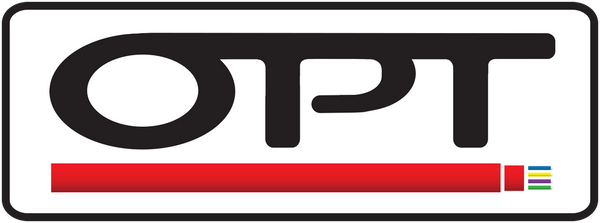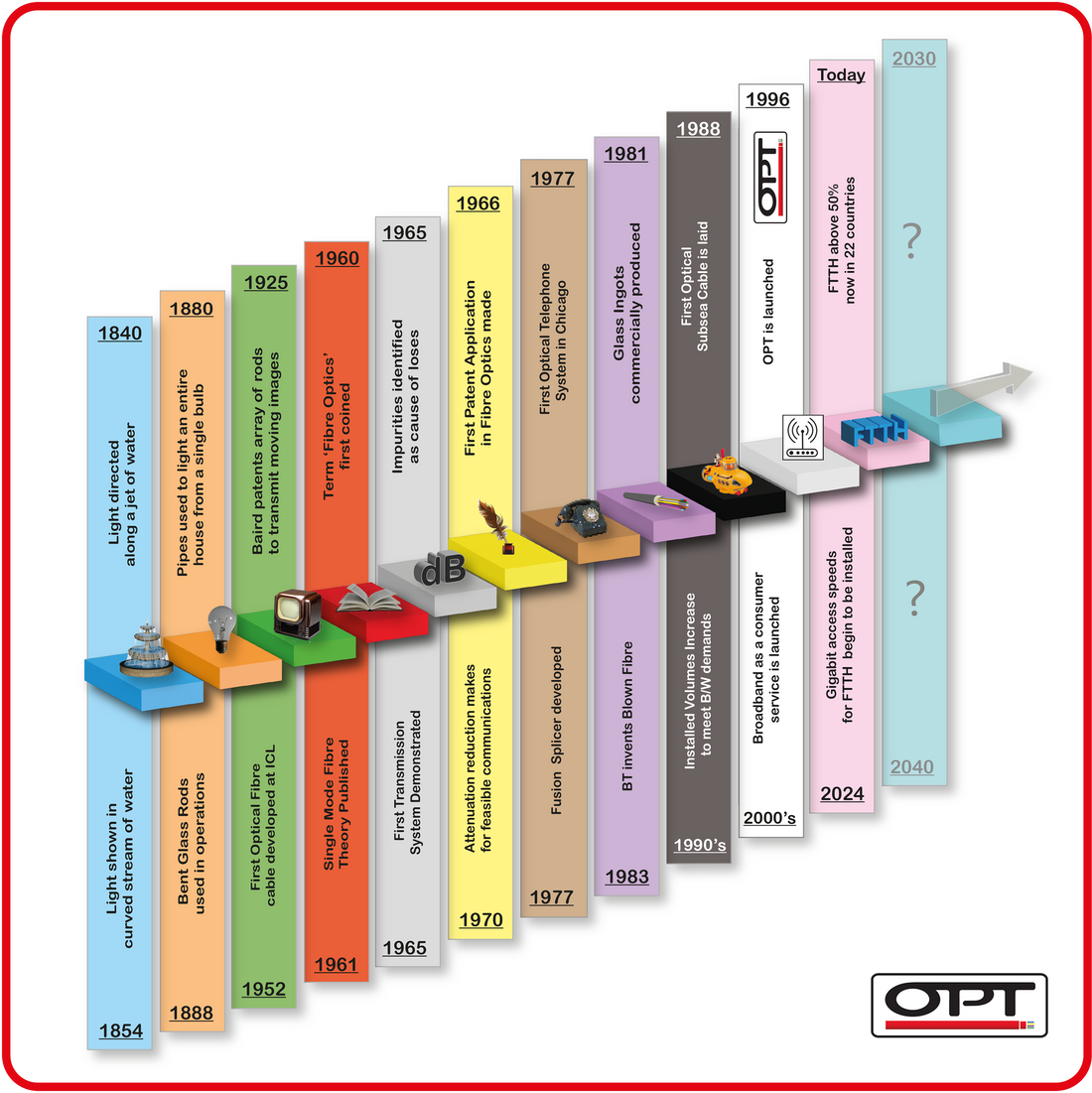As part of a new series of posts called 'Optical Plant Matters', OPT Services present;
Fibre Optics Through Time, Tracing the Evolution of the Ingenious Innovation.
Fibre optics have become an integral part of modern life, finding their presence in broadband services, telecommunications, medical procedures, and scientific investigations. But have you ever wondered how we reached this point of extensive integration? In this article, we'll delve into the journey of fibre optics, exploring the innovative milestones and significant discoveries that have contributed to its widespread and diverse applications in today's world.
1800s
1840s: Daniel Collodon and Jacques Babinet demonstrated how light could be directed along a jet of water in a fountain display
1854: John Tyndall showed how light could travel through a curved stream of water which proved that a light signal could be bent (refracted) and didn’t have to travel in a straight line.
1880: William Wheeler invented a system of light pipes which were given a highly reflective coating inside and could be used to light an entire house from just a single electric lamp in the basement.
1888: In Vienna, bent glass rods were used to direct light into body cavities in order to properly illuminate hard to reach areas during an operation.
1900s
1925s John Logie Baird patented the idea to use an array of transparent rods to transmit moving images for television.
1952: A physicist at Imperial College in London in the UK, called Narinder Singh Kapany, invented the first actual fibre optic cable.
1960: Narinder Singh Kapany coined the term fibre optics after writing a 1960 article in Scientific American that introduced the topic to a wide audience. He subsequently wrote the first book about the new field.
1961: American Optical researcher Elias Snitzer published a theory for single-mode fibres, where the core of the filament is so small it could carry only one stream (or mode) of light. However the solution had far too much loss to be used as a practical telecommunications link.
1965: British researchers, Charles Kao and George Hockman of Standard Telephones and Cables (STC) highlighted that attenuation in fibre optics was caused by manufacturing impurities.
1965: The first working fiber-optic data transmission system was demonstrated by German physicist Manfred Börner at Telefunken Research Labs in Ulm in 1965
1966: The first patent application for this technology is made
1970: Four scientists working for Corning Glass Works in America discovered how to reduce attenuation sufficiently to make fibre optics feasible for communications.
1977: The first optical telephone communication system was installed in Chicago. Each fibre carried the equivalent of 672 voice channels.
1977: The first fusion splicer was developed by Fujikura. Compared with today's machines the process was totally manual with no computer control or cameras.
1981: Based on the work of STC and Corning, General Electric produced glass ingots (known as the Preform) that could be drawn into strands up to 25 miles (40 km) long.
1983: British Telecom invents Blown Fibre - a method of installing small fibre optic cables into a pre-installed network of plastic tubing.
1988: Although subsea cables have been around since the 1850s, the first optical subsea cable wasn't laid until 1988. The eighth transatlantic communications cable, known as TAT-8, was the first optical fibre subsea cable. Constructed by a consortium of companies led by AT&T, France Télécom, and British Telecom, the cable was able to carry 280 Mbits per second. It was retired in 2002.
1990s: As the internet was being popularised, fibre optics began to be laid to keep up with the growing numbers of users and increases in bandwidth demands.
2000s
Early 2000s: Broadband as a consumer service becomes available, and fibre to the cabinet and later fibre to the home become economically feasible propositions. 80 percent of the world's long-distance traffic was carried over 25 million kilometers of fibre optic cable.
Today: According to the FTTH Council for Europe data from 2021 September, 22 countries have achieved fibre to the home rates higher than 50%. The top 5 ranking in the world is led by UAE (98.1%), 2nd is Qatar (97.8%), 3rd comes Singapore (96.5%), then Hong Kong (91.6%) and China (89.4%). In Europe, Iceland tops the European FTTH/B ranking for the fourth consecutive year in a row, with a 76.8% penetration rate. Spain are second (73.5%), followed by Portugal (71.1%). In total seven European countries have passed the 50% rate (Iceland, Spain, Portugal, Sweden, Norway, Romania, France). According to OFCOM data, in 2020 just over five million (18%) UK homes have access to full fibre connections.
In the near future download speeds of 1 Gigabit per second (1Gbps) will become the norm. The average download speed in 2018 for America was about 96 Mbps. That means 1 Gbps is over 10 times faster than the average download speed. With that much speed you could download a full HD movie in 47 seconds. If you only had download speeds of 100 Mbps, the same task would take a full eight minutes. Gigabit internet means you can stream in the highest video quality, on up to 40 devices at the same time!
Conclusion
Fibre optics have revolutionised the telecommunications sector and paved the path for our modern internet. This technology is a constant evolution, continually stretching the boundaries of data transfer speed and bandwidth using light. Without doubt, optical fibre will remain a key player in the communication landscape for a long time to come.
Here at OPT Services, we are product specialists for fibre networks. We sell a range of fibre optic cable, cable preparation tools and fibre management products. We also provide storage and logistics, alongside product development, graphic design, plus cable winding, cable installation and assessment capabilities. We have been in this industry since 1996 and have over 130 years of combined expertise and experience.

